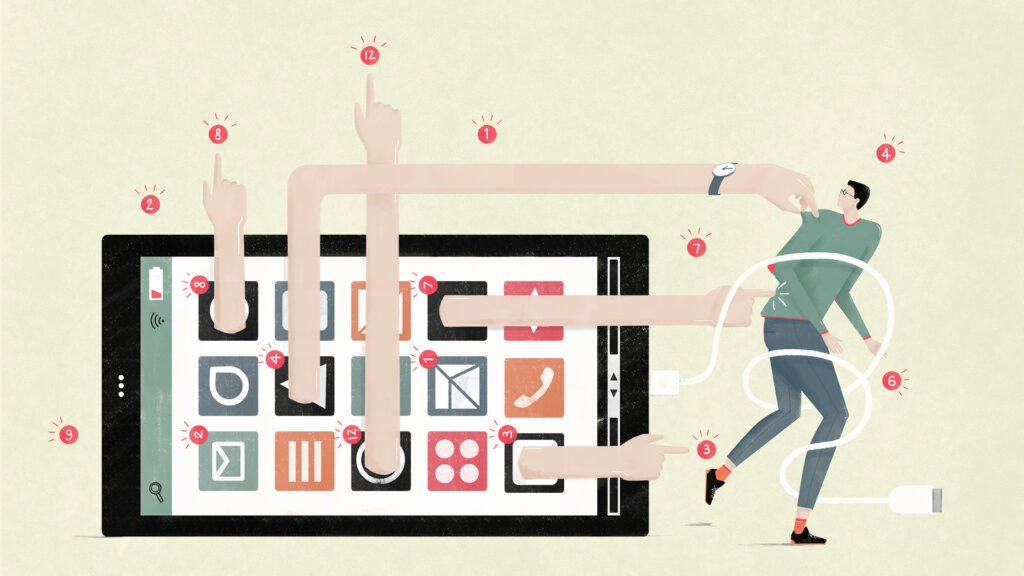Do You Have Subscription Fatigue?

recifest.com
The era of the subscription economy has brought convenience, but it has also ushered in a new type of exhaustion—subscription fatigue. Everything can be accessed with a monthly payment, from streaming services to meal delivery kits and cloud software to curated boxes.
But as the number of grows, many people start feeling overwhelmed. Let’s explore subscription fatigue, why it happens, and how to manage it effectively.
What Is Subscription Fatigue?
Subscription fatigue refers to feeling overwhelmed, frustrated, or financially drained by the increasing number of subscription-based services.
As companies shift their business models to focus on recurring revenue, consumers are inundated with monthly charges for everything from entertainment and groceries to personal finance apps and software services.
The cumulative impact of managing multiple services and tracking payments can lead to exhaustion.
While the idea behind subscription services is to simplify life by making things more accessible, many are experiencing the opposite effect. Subscription fatigue often results from an overload of services that aren’t being fully utilized, creating stress and frustration.
The Subscription Economy Boom
Over the past decade, the subscription economy has exploded. What began with traditional services like magazine or cable TV has expanded to virtually every sector.
For entertainment alone, consumers can choose from dozens of streaming services, such as Netflix, Hulu, Disney+, and Spotify. Meanwhile, subscription boxes like Birchbox, Blue Apron, and Dollar Shave Club offer everything from skincare products to meal kits every month.
The COVID-19 pandemic has further amplified this surge in services as people turned to online platforms for work, entertainment, and daily necessities.
Companies responded by offering more digital and contactless services, rapidly accelerating the trend.
According to a report by Zuora, the subscription economy grew by more than 350% over the last seven years. With growth at this scale, it’s no surprise that consumers are feeling the strain.
Why Do We Experience Subscription Fatigue?
Subscription fatigue sets in for several reasons. One of the main drivers is the sheer volume of options available today. The average consumer subscribes to numerous services across various sectors, including streaming platforms, fitness apps, cloud storage, news outlets, and software updates.
Here are the critical contributors to subscription fatigue:
1. Financial Stress
When adding up the cost of multiple subscriptions, many consumers realize they’re spending hundreds of dollars each month. It’s not always immediately apparent how these costs accumulate, but it can create financial strain over time.
The recurring nature of these payments, particularly if you’re paying for services you rarely use, adds to the sense of waste.
2. Cognitive Overload
Managing several accounts, remembering passwords, and tracking billing cycles can lead to cognitive overload. It becomes difficult to monitor whether you’re getting value from each service, let alone keep up with renewals, price changes, or cancellations.
3. The Pressure to Keep Up
Some subscription services, particularly in entertainment, foster a fear of missing out (FOMO). With new shows, music, or games being released frequently, consumers feel pressured to maintain their to stay current. This constant influx of new content creates an emotional burden on top of the financial one.
4. Unused Subscriptions
Many people subscribe to services impulsively, only to realize they rarely use them. Whether it’s a streaming platform you haven’t logged into in months, or a subscription box that no longer excites you, paying for unused services adds to the frustration of feeling overwhelmed.
The Hidden Costs of Subscription Fatigue
Beyond the financial impact, subscription fatigue carries emotional and psychological costs. Consumers who feel trapped in numerous subscriptions often experience anxiety over wasted money, difficulty in canceling services, or guilt for not utilizing what they’ve paid for.
Additionally, subscription services are designed to encourage long-term use, often by making cancellation processes inconvenient or obscure. Some platforms bury the “cancel” button within layers of settings, making it harder for people to cut ties when they no longer find value in the service.
Signs You Might Have Subscription Fatigue
Are you experiencing subscription fatigue? Here are some common signs:
1. You lose track of what you’ve subscribed to.
If you can’t remember all the services you’re paying for or have difficulty keeping track of them, you’re likely dealing with too many subscriptions.
2. You feel overwhelmed by recurring payments.
If you feel uneasy when you review your bank statements because of all the subscription charges, it’s a sign that the financial burden is taking its toll.
3. You’re not using most of your subscriptions.
If you regularly pay for services you barely or never use, it indicates that subscription fatigue has set in.
4. You experience stress when managing subscriptions.
Struggling to remember passwords, monitor expiration dates, or even cancel services can be a sign that subscription management is overwhelming you.
How to Manage and Combat Subscription Fatigue
If you recognize that you’re dealing with subscription fatigue, there are steps you can take to regain control and reduce the overwhelm.
1. Audit Your Subscriptions
Start by listing every service you subscribe to and the monthly cost. This will give you a clear picture of how much you’re spending and help you identify unused or unnecessary services.
2. Cancel Unnecessary Services
Once you’ve audited your subscriptions, identify the ones you no longer use or that no longer provide value. Don’t hesitate to cancel these services. Most companies will allow you to re-subscribe anytime, so you’re not losing out by canceling now.
3. Use Subscription Management Tools
Several apps, like Truebill or Bobby, help you track your subscriptions, monitor your spending, and easily cancel services. These tools are designed to simplify management and eliminate some of the cognitive load associated with it.
4. Switch to Annual Payments (If Feasible)
Some services offer discounts if you pay annually instead of monthly. If you use a service regularly, opting for a yearly plan can save money and reduce the monthly charges you have to manage.
5. Set Limits on Subscriptions
Consider setting a limit to avoid overloading yourself with too many subscriptions in the future. For example, you could limit your subscriptions to three entertainment services and one delivery box at a time.
The Future of Subscription Services
The subscription economy is here to stay, but consumers are beginning to push back. As people become more mindful of their finances and time, the market may shift to offer more flexible, pay-as-you-go options rather than rigid monthly models.
Subscription fatigue is a growing concern, but you can stay calm by taking active steps to manage your services.
Regular audits, conscious spending, and clear limits can help you regain control over your subscriptions and ensure you’re only paying for what truly adds value to your life.
Conclusion
Subscription fatigue is a modern phenomenon that reflects the tension between convenience and complexity. With so many services available, the sheer number of options makes it easy to feel swamped.
However, you can avoid subscription fatigue by taking a more mindful approach, auditing your subscriptions regularly, and focusing on what genuinely enhances your life.






